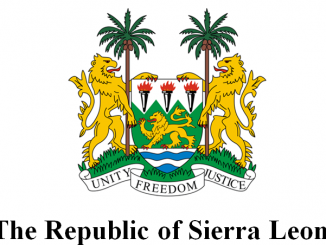Former interim leader of the Sierra Leonean rebel group that Charles Taylor is accused of providing support for today made considerable effort to distance his rebel group from the 1999 invasion of Freetown, an attack which saw the commission of heinous crimes including murder, rape, amputations of the arms and limbs of civilians, and the looting and destruction of civilian property.
According to Issa Hassan Sesay, the present witness testifying for Mr. Taylor, the attack on Sierra Leone’s capital city of Freetown in January 1999 was undertaken solely by members of the Sierra Leone Army (SLA), who in May 1997 had overthrown the democratic government of Sierra Leone and formed the Armed Forces Revolutionary Council (AFRC). After the May 1997 coup, the AFRC teamed up with Sierra Leone’s main rebel group, the Revolutionary United Front (RUF). Together the two groups ruled Sierra Leone until they were forcefully removed from Freetown in February 1998 by West African peacekeepers under the Economic Community of West African States Monitoring Group (ECOMOG).
As the rebel forces retreated from Freetown, they occupied various towns in Sierra Leone’s countryside, and in January 1999, the rebel forces invaded Freetown again. Prosecutors have alleged that the 1999 attack on Freetown was a joint operation undertaken by the AFRC and the RUF, an allegation that Mr. Sesay denied today.
“It was an AFRC operation, it was an independent operation that they carried out,” Mr. Sesay told the court in reference to the January 1999 invasion of Freetown.
Mr. Sesay explained that “they [AFRC] fought from Koinadugu [Northern Sierra Leone] right up to Freetown on their own.”
According to Mr. Sesay, the action of the democratic government of President Ahmed Tejan Kabbah to execute members of the Sierra Leone Army (SLA), who had been found guilty by a Court Martial for their involvement in the coup, was the main reason why the AFRC decided to attack Freetown.
“That is why they attacked Freetown, they said their colleagues had been killed,” Mr. Sesay told the court.
Prosecutors on the otherhand have insisted that the 1999 Freetown invasion was a joint operation undertaken by the AFRC and the RUF in pursuit of their joint criminal enterprise in Sierra Leone. Prosecutors hope that by proving the RUF’s involvement in the Freetown invasion, Mr. Taylor would be held liable because according to prosecutors, when Mr. Taylor allegedly provided arms and ammunition to the RUF to attack the diamond rich town of Kono in December 1998, the rebels used that operation and the same arms and ammunition to advance to the northern part of the country before they proceeded to Freetown in January 1999.
Mr. Sesay has denied these allegations, telling the court instead that the AFRC troops that attacked Freetown took off from Koinadugu under the leadership of Solomon Anthony James Musa (SAJ Musa) but that when SAJ Musa died before the troops entered Freetown, Alex Tamba Brima, aka Gullit, (also now convicted by the Special Court and serving a jail term in Rwanda) took over the leadership of the troops. It was at that time that he made contact with RUF commander Sam Bockarie.
“According to [my radio] operator, it was Gullit’s name that was mentioned to Sam Bockarie’s operator. He said Gullit told Sam Bockarie that SAJ Musa was dead. Then Sam Bockarie told Gullit that they should wait for reinforcement to come so that they will attack Freetown,” Mr. Sesay explained.
Mr. Sesay added that Gullit did not wait for the reinforcement to arrive when he led his troops into Freetown.
When asked whether it was Mr. Bockarie who offered to send reinforcements to support Gullit’s troops, Mr. Sesay said, “That is what my operator told me…based on the instruction he gave Gullit to wait to get reinforcement for us to attack Freetown, but Gullit did not wait, he did not go ahead with what he was told.”
Mr. Sesay told the court that the RUF was not involved in the plan to attack Freetown because the AFRC’s SAJ Musa and the RUF’s Mr. Boackarie were not on speaking terms. When asked why Mr. Bockarie was “offering to send reinforcement to this renegade group,” Mr. Sesay said that “when Gullit told Bockarie that SAJ Musa was dead, since Gullit was his friend, Bockarie was ready to work with him.”
Mr. Sesay said that the RUF fighters who moved to reinforce the AFRC could not enter Freetown because ECOMOG forces stopped them at Waterloo outside Freetown.
“ECOMOG was in Hastings and Jui and so they [RUF} could not go to Freetown,” Mr. Sesay said.
He agreed that their purpose was to enter Freetown.
Mr. Koumjian then played in court a January 1999 audio clip of a BBC interview by a Colonel FAT Sesay in which the Colonel told the interviewer that “we have again overthrown the SLPP [Sierra Leone People’s Party]…the combined forces of the AFRC and the RUF forces.”
In response to this, Mr. Sesay said, “I knew that he was lying because at that time, the RUF were in Makeni.”
Mr. Sesay insisted, “I was not part of the planning, nor was I part of the execution of the attack on Freetown.”
When told that RUF’s Mr. Bockarie had “called his papay [Mr. Taylor]” to inform him that the rebel forces had entered Freetown, Mr. Sesay said, “I didn’t know about that.”
Mr. Sesay’s testimony continues on Monday as there will be no court sitting on Friday.





